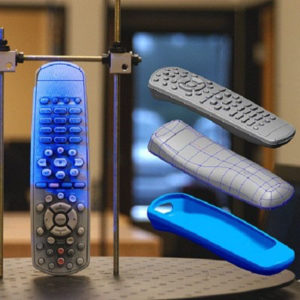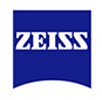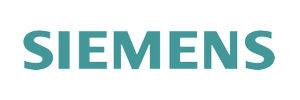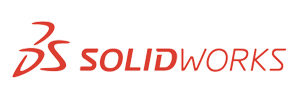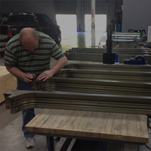3D Reverse Engineering Services
Reverse Engineering involves taking existing physical parts and assemblies and creating CAD models and detailed toleranced drawings. The need typically arises when a company wants to make improvements to an existing outside design or they have insufficient design documentation (CAD and drawings) for internal designs or that require CAD data for modern manufacturing methods.
The 3D data that is collected and CAD modeled, can be used to troubleshoot, reproduce, study, analyze, inspect, or can be applied to other future applications or product enhancements. 3D CAD models can be easily updated for changes in the product design and/or tool or die design.
Tools and dies can even be generated by using the surface models created by our 3D reverse engineering services. So if your finely tuned stamping or injection mold has just broken, we can use our 3D scanning services to digitally fix it using reverse engineering software and have you back up and running in short order.
At 3D Engineering Solutions, we have been performing reverse engineering services and projects since our inception. Our large staff of qualified engineers has a depth of experience in these activities and a background in design engineering needed to produce excellent reverse engineered results.
Learn more about how our 3D reverse engineering services can help you
Reverse Engineering Process
Understanding the function of the component or assembly is paramount to the basic steps of the reverse engineering process. It is not enough to duplicate a physical part into CAD software, but you must know how the part/assembly interacts with surrounding components in the overall system. This will allow the proper tolerance stacking information that is needed for dimensioned and tolerance prints.
We have engineers certified in tolerance stacking using Geometric Dimensioning and Tolerancing (GD&T) and have experience based on actual design work to verify the efficacy of our process. This background also gives us insight into the likely design intent of areas of a component’s design.
We do rely on our customers for industry-specific knowledge and information pertinent to their specific needs and design intent. We are the experts at what we do and know that our customers are the experts at what they do. So we want to include their expertise in our reverse engineering activities to produce the best possible result.
Our focus is on Mechanical and Electro-Mechanical reverse engineering projects. Areas outside of these (such as software development, circuit board design and optics) are handled on a case by case basis by using outside experts or our customer’s internal experts. Material and surface analysis is taken care of by our network of local suppliers.
Our process continues by gathering all existing information and digitizing provided sample parts. We often receive outdated prints, manuals, broken parts or other written data to use as starting points and guides in the reverse engineering workflow. We seamlessly combine all available information in the reverse engineering process.
Digitizing Components and Assemblies
Digitizing components and assemblies is achieved in our extensive temperature controlled metrology laboratory that has a full range of contact and non-contact measurement instruments. We also offer on-site data collection when a physical part cannot come to us.
We employ tools such as hand instruments and gages, Laser Scanning, Structured Light Scanning, Long Range Laser Scanning, High Precision CMMs, Large Area Gantry CMMs, and Industrial CT Scanning. We have most of our scanning processes listed under our ISO17025 scope of accreditation.
This metrology-based accreditation ensures that scanned data that we take for you will be correct and reliable to use on your laser model, even when it comes to large objects. The right laser scanning tools and parts are essential for the job. 3D Scanning aids the production and manufacturing process of your products and refines the accuracy of the CAD model parts through state-of-the-art scan quality.
Once accurate data is collected, we create CAD models using one of the following software depending upon your requirements: Siemens NX, SolidWorks, Creo or Revit. These models are directly compared to the raw point cloud or voxel data sets (CT Scanning) using a scan to CAD comparison analysis. This gives us the knowledge that our CAD models match the physical part data well.
These CAD models form the basis for creating detailed drawings with precise measurements used during manufacturing and 3D scanning services. We combine our knowledge of the specific processes such as 3D scanning needed to manufacture the particular components and our design engineering knowledge to layout basic print details that model the end result. Knowledge of the end-use application gives us the basis for establishing datum reference frames.
3D scanning aids in the process of comprehensive modeling and tolerance, facilitating both solid models and mesh models. Detailed tolerance stacking then gives us information for tolerancing. In the end, a good tolerance stack book provides the ability to create robust high-volume components.
Note that it is sometimes useful to use specific part data only for tolerancing. These are typically cases where the design is a ‘one-off’ or where budgeting/timing constraints prohibit the lengthy process of creating tolerance stacks. ‘One-off’ situations are ones where only one of the designs is actually needed to be produced, so the last-minute fitting of components does not cause an undue issue.
If budgeting/timing constraints are an issue for your project, then we can mitigate this by digitizing multiple components, averaging data sets, and by using our or our customer’s internal tolerancing knowledge. Systems such as 3D scanning are used when digitizing components and assemblies.
The Right Equipment, Staff, Experience, and Knowledge
3D Engineering Solutions combines the right equipment, engineering staff, experience and knowledge to tackle the most difficult reverse engineering work. Everything you need is under one roof, from basic steps to advanced solutions. Our engineer-metrologists are proficient in all of the reverse engineering tools that we use and have the experience base to perform the work efficiently.
Our large staff is configured to handle your large projects with ease. We have completed thousands of metrology and reverse engineering projects for hundreds of customers and would like the chance to complete yours as well.
By translating complex physical shapes into digital models by reverse engineering you can . . .
- Create CAD models to design and develop tooling for manufacturing processes
- Easily make design changes in part, tool or mold
- Interchange CAD files with other CAD software-equipped systems, product and designers, contract manufacturers, etc.
Diminishing Manufacturing Sources and Material Shortages (DMSMS) or Diminishing Manufacturing Sources (DMS) solutions are supported by 3D Engineering Solutions in support of legacy military equipment as well as other industry needs. We can take legacy drawings that are difficult to read and/or existing or damaged physical components and re-create functional CAD models and drawings.
Whether providing DOD reverse engineering or servicing a wide range of other industries or projects, 3D Engineering offers world-class solutions and expert service.
FAQs
-
Can a 3D scanner help with reverse engineering?
- 3D scanning can help with reverse engineering because it allows for the complete replication of complex objects when original CAD designs aren’t available. 3D models can then be used to modify those existing objects to design specifications.
-
What is reverse engineering in CAD?
- Reverse engineering is the process of dismantling an object or system in order to determine how it was made. In CAD, reverse engineering is usually performed with the help of a 3D scanner to virtually deconstruct a design.
-
Why do designers use reverse engineering?
- Reverse engineering helps designers to understand every aspect of a product, object, or system. Key functions, critical tolerances, and overall design intent can often be better understood by deconstruction through reverse engineering.

